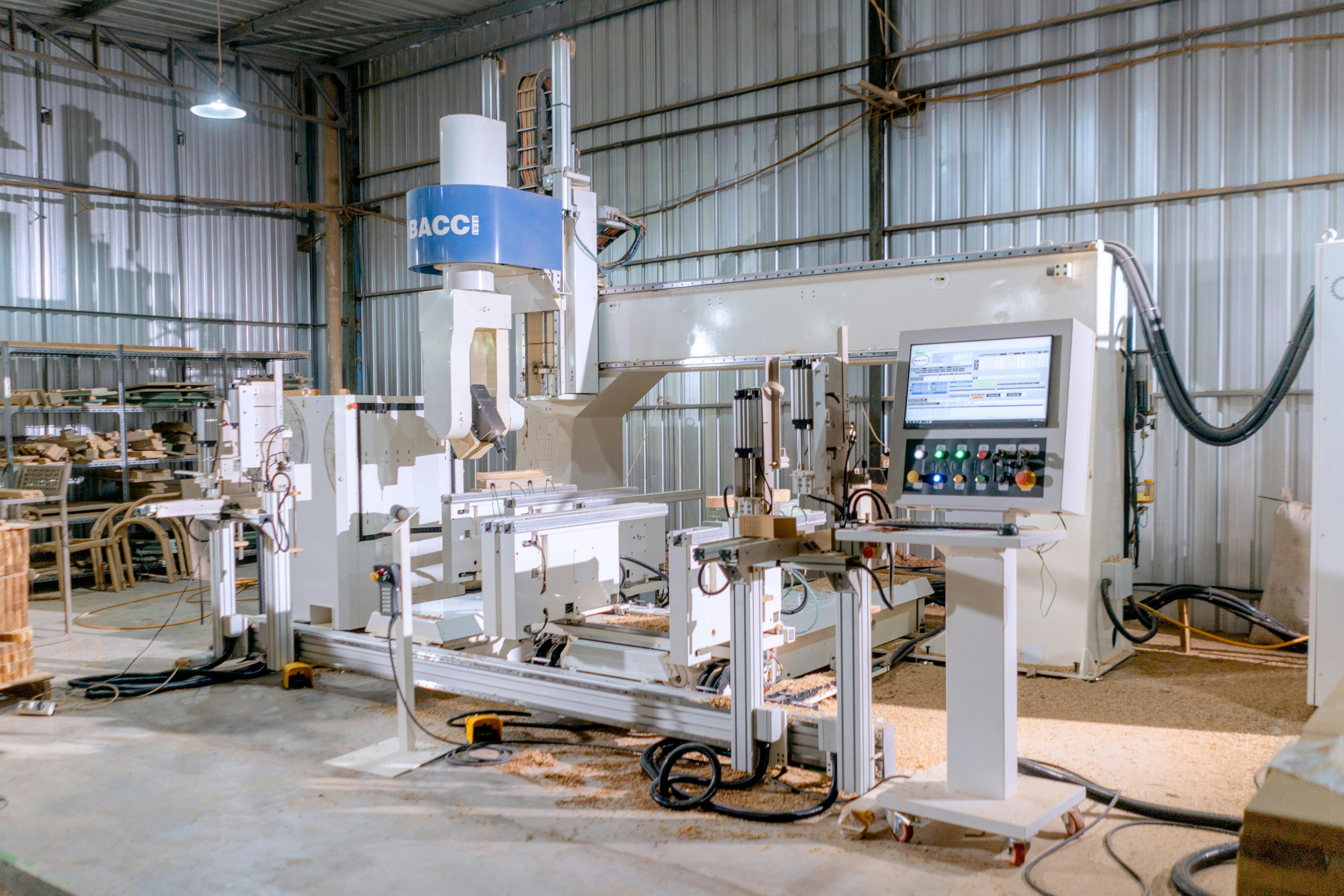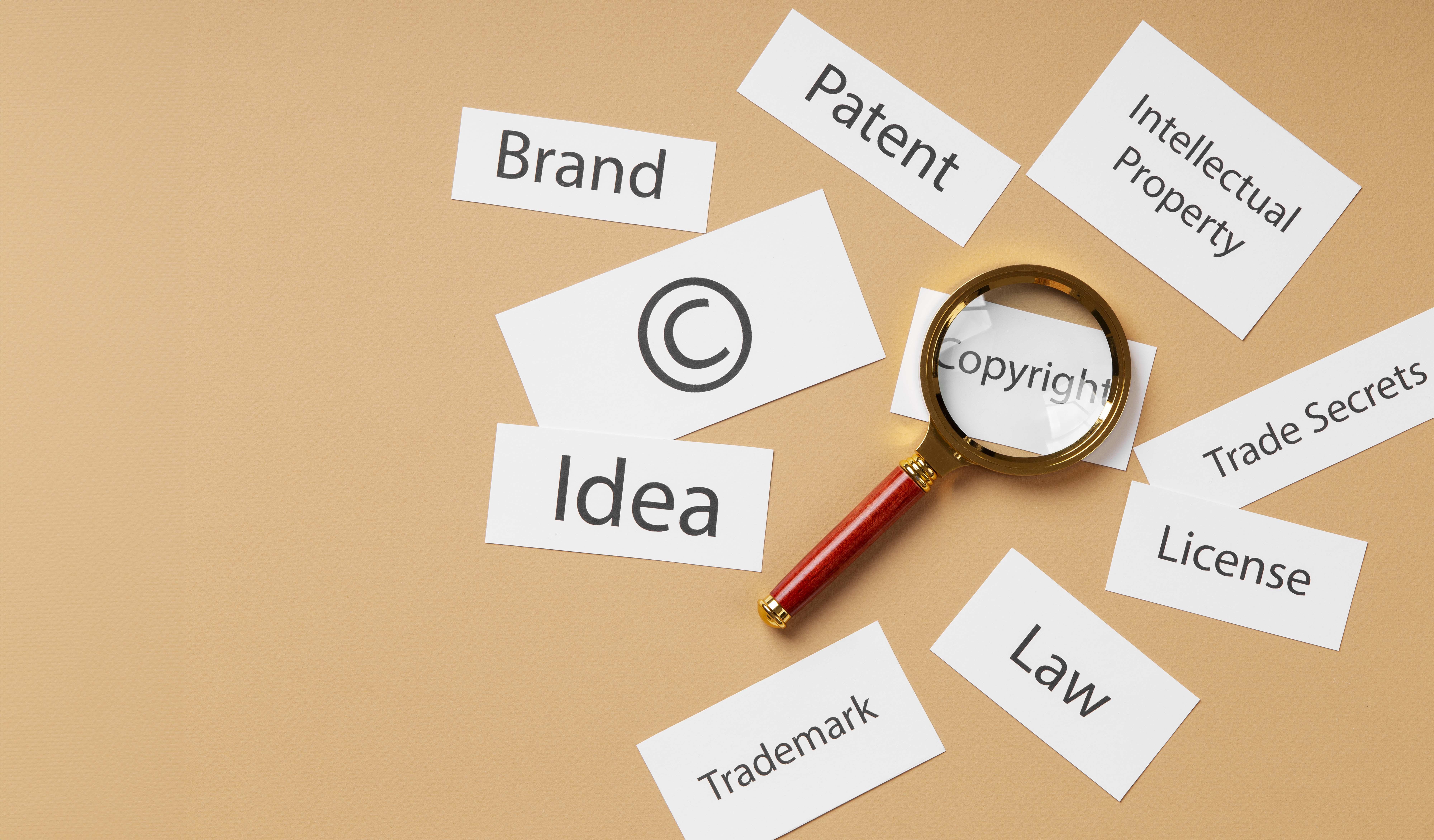CASE STUDIES
Real Results: Case Studies of Success
Grid-scale energy storage

One of two founding directors: set up business, wrote business plan.
Developed majority of IP, wrote 10 patent applications.
Brought in many partner companies inc. 6 multinationals.
Advising political, government & industry bodies on energy storage, renewable electricity, and the energy system as a whole.
3-phase distribution board

Wrote business plan, sought private and public funds.
Invited to be part time MD due to the service and support I delivered.
Anaerobic Digestion start-up, market leading technology

Constructed a contractual, financial and managerial framework to open the market following regulatory and customer blockages.
Brainstormed aspects of the embodiment of the technology to speed and facilitate effective installation.
Smokeless bio-fuel manufacturer

Advised on obtaining funds and approvals without surrendering IP.
Solved some technical issues.
Made business plans complete, realistic and financially viable.
EU funded R&D and commercialisation programme

Recruited companies into an EU funded R&D programme supporting the development of eco-innovative technologies and services.
Helped define and refine R&D programmes in many disciplines.
Created, analysed & improved businesses, strategies, technologies, products and services in many sectors, focused on eco-innovation.
Automated robotic non-destructive testing (NDT)

Identified the main industries and clients for software to automate the programming of non-destructive testing robots.
Identified other technologies for which such software is suitable.
Developed a questionnaire to do a market survey and gauge interest.
Packaging manufacturer

Brainstormed a new product range and application to address a new market, add new services and win eco credentials.
Environmental consultancy

Extended the idea of the development of a monitoring app into an entire strategy to build a new income stream and business.
Renewable energy generation and storage

Separated two connected projects so both are more likely to proceed.
Developed an energy storage idea into a rational, fundable proposal.
Rolling mill manufacturer

Brainstormed ways of recycling energy to save clients’ operational costs, so creating unique selling propositions in a crowded market.
Cable and harness manufacturer: new product development

Based on current company capabilities, developed and marketed 5 new products for actual industry requirements in a staid industry.
Used these new products to break into different markets and customers, to which we could sell standard product also.
Sourced ongoing and one-off product to deliver the solutions.
Strategy development and implementation

Wrote the business strategies for a medium-sized manufacturer, a medical services company, an educational charity, a multinational MRO division of a global conglomerate; contributed to others.
Wrote and implemented the marketing strategy for both a mid-sized manufacturer and a non-destructive testing business.
Contract manufacturers: marketing and new market development

Researched and broke into new markets and customers, created marketing literature, wrote and published many articles, created website, developed the brand, joined industry bodies, exhibited at trade fairs, made the companies well known in their markets.
Non-Destructive Testing: product development, accreditation, marketing

Identified the need for a new NDT technology.
Sourced the best available by trials (independently verified after).
Proposed and justified product development project to simplify the system from graduate operator to shop floor operator.
Negotiated the contract with the supplier: cost share, free exclusivity.
Wrote and published an industry journal paper.
Wrote 2 patent applications, inventor on both.
Managed product development project, below budget.
Managed accreditation in the rail industry – both track and vehicle.
Sold the NDT product (potential £100’s K p.a.) as a service (potential: £10s M p.a., ongoing).
Marketed and sold NDT services in UK, China, Europe and USA.
Heavy engineering: Turn-key investment in a £4.4M machining cell

Innovated cell and machine design to increase capacity of machine cell by 233% (at same price), worth £4.2M p.a.
Future upgrade: price reduced 63%, capacity increased 67%.
Raised equipment resilience from zero to 95%.
Increased cell flexibility & functionality, instigated unmanned operation.
Negotiated procurement contract with free training, first 100 programmes, 1 year on-site maintenance and coaching.
Grit blast and paint plant
Capital investment and workflow re-ordering

Developed new process to accommodate additional work and comply with VOC emissions legislation, for complex overhauls.
Invested in grit blast and paint plant (£750k).
Negotiated procurement contracts for all items.
Rearranged shop floor and overhaul processes to reduce overhaul costs by 10% (£271k p.a.) and turn-round times by 2/3 despite adding the two new processes.
Managed the project from business case to hand-over after snagging.
Steel Plant: Furnace and forge improvements

Planned and justified a £1.1M 25-year deep overhaul and upgrade.
Reduced steel usage by £414k p.a. and energy usage by £32k p.a.
Reduced machine and tooling wear by £290k p.a.
Implemented Planned and Preventive Maintenance.
MRO (Maintenance and Repair Organisation): Various production efficiency projects

Efficient working practices, co-ordination between functions.
Revised shop layout, improved tooling, revised procedures.
Process improvement, management systems.
Savings: over £800k p.a. plus £500k one-off – average results each year.
MRO: Purchasing and capital investment savings

Acoustic test 69%; Offices 26% (plus £125k p.a. efficiency savings).
Chemicals 60% of £160k p.a. spend, with rationalisation and support.
Distribution and Logistics: Warehouse set-up

Cost £260k, a reduction of 58% on the original cost.
Increased capacity by 73%, in a more workable space.
Catalysed and guided the development of a new business that took 33% market share within 3 years.
Initiated a novel service offering into the market, which enabled this.
Intellectual Property

Introduced IP management into a neophyte division.
Took out 4 patents, wrote 8 more, inventor on 4 of them.
Saved the company from a £9-figure IP claim (including rectification costs) which would have excluded it from North America also.
Aerospace: parallel design / process re-engineering

Reduced design change lead times from 3+ years to 20 weeks.
Introduced design for manufacture and cross-functional teamwork.
Introduced parallel rather than sequential working.
Business process re-engineering before the book was written!
Manufacturing: Cost avoidance

Purchase of paint plant not needed: £100k.
Purchase of cleaning plant avoided: £25k + £25k p.a. chemicals costs.
Heavy engineering manufacturer: purchasing (France, in French)

Created competitive advantage through purchasing.
Reduced purchasing costs by over 10% (£12M).
Developed strategic supplier relationships, reduced supplier base.
Re-structured department: split into purchasing, buying and support.
Technical training of purchasers and buyers.
Chemical manufacturing: production efficiency, customer service (South Africa)

Created formal production planning methods and system, reducing the company’s risk of depending on one person.
Raised service levels from 10% to 90% of requested delivery dates, and from 30% to 95% by lead time, and rising.
Increased capacity by 20% without capital investment.
Reduced national finished goods stocks by 60%.
Furniture manufacturer: OTIF transformation

Saved a factory under notice of closure: brought it to world class.
Reduced lead times from 5 weeks to 2 weeks & productivity by 30%.
Raised customer service from 70% to 99% of deliveries on time.
Transformed the administrative systems to enable the above.
Business analysis to change a stock system into an MRP system.
FMCG: production and distribution efficiency

Increased company value from £7M to £35M prior to mgt buyout.
Increased warehouse productivity by 36%.
Enabled success of 30% productivity increase in factory.
Warehousing layouts nation-wide for 45% capacity increase.
Utility: field engineering management and productivity

Customer service and efficiency improvements, forming the basis for a 6-year advertising campaign and slogan.
Cut customer waiting times from 5-10 weeks variable to 2 weeks firm.
Improved customer service from 65% to over 97% (completion on scheduled date, first visit) and raised productivity by 27%.
Utility: purchasing & stores (Mauritius, in English and French)

Transformation of tendering and purchasing strategy based on special company and national needs and constraints.
Reduction of administrative lead times from 2 years to 3 months.
60% reduction in stocks with reduced stock-outs.
Airline caterer (30-70,000 meals per week):
productivity and management

Turned a loss-maker into a profitable company flagship, overcoming the bankruptcy of a major customer (36% of sales).
Raised labour productivity by 20%, 100% customer service record.
Created production planning and master scheduling systems.
Re-structured the production and planning functions.
Devised shift system to maximise customer service, minimise lead times and reduce shift premium pay.
Property services company: efficiency, systems, business processes re-engineering

Saved the company from axing by its parent.
Process re-engineering for all property services functions (architects, building surveyors, landlord’s functions).
Business re-engineering to develop a new strategy for growth and stability, better serving the parent and diversifying.
Managed multi-site multi-disciplinary teams, 8 concurrent projects.
Investment bank: efficiency & management control (Luxembourg, in French)

Re-structured all the back-room operations to enable more effective customer service and the bedding-in of a new computer system.
Productivity increases by between 20% and 35%.
Introduced new management systems and methods throughout.
About Mark Howitt

Mark Howitt is an entrepreneurial and experienced company director with a proven international track record of both coaching and managing success within many market sectors and functions. Both commercially and technically innovative, with an unorthodox and whole-systems approach; results orientated, highly ethical, financially savvy with well-balanced track record in strategic planning, marketing, operational management, business improvement, R&D, manufacturing, procurement and supply chain, sales and capital investment. Politically aware (all parties), familiar with the main drivers of a wide variety of markets.
Mark has launched and advised 2 independent businesses and 3 new subsidiaries, all growing strongly and becoming influential in their sectors; took 2 businesses into new markets while re-positioning and marketing them as major premium suppliers; supported development and implementation of numerous successful business and marketing strategies; and helped many businesses become more efficient and effective in their ordinary work by making their structures, systems and processes world-class. He has also innovated new products, services and businesses in diverse real-world (as opposed to financial or virtual) industries.
About Mark Howitt

Mark Howitt is an entrepreneurial and experienced company director with a proven international track record of both coaching and managing success within many market sectors and functions. Both commercially and technically innovative, with an unorthodox and whole-systems approach; results orientated, highly ethical, financially savvy with well-balanced track record in strategic planning, marketing, operational management, business improvement, R&D, manufacturing, procurement and supply chain, sales and capital investment. Politically aware (all parties), familiar with the main drivers of a wide variety of markets.
Mark has launched and advised 2 independent businesses and 3 new subsidiaries, all growing strongly and becoming influential in their sectors; took 2 businesses into new markets while re-positioning and marketing them as major premium suppliers; supported development and implementation of numerous successful business and marketing strategies; and helped many businesses become more efficient and effective in their ordinary work by making their structures, systems and processes world-class. He has also innovated new products, services and businesses in diverse real-world (as opposed to financial or virtual) industries.
Our Team

John Doe

John Doe

John Doe

John Doe
As Seen On
Hear From My Client
Blog Posts

How to Evaluate Winning Technologies and Companies for Investment
Ever picked up a gadget in a store and thought, “Wow, this could be huge”? That initial spark is what drives many to invest in new products. It’s thrilling, but let’s be honest: it can be a bit of a minefield. For every Instant Pot that captures the market’s attention, there are countless products that end up languishing in clearance bins, forgotten and unwanted.
So, how do you separate the future bestsellers from those destined for obscurity? It’s not just about trendy features or sleek designs. You need a keen eye for market trends, an understanding of manufacturing challenges, and the ability to anticipate what consumers will want before they even know they want it.
In this blog, we’ll guide you through the process of evaluating technologies and companies with high investment potential. From pinpointing promising innovations and assessing their viability to analysing market conditions and financial metrics, you’ll gain the tools needed to make informed investment choices.
Significance of Evaluating Investment Opportunities
Evaluating investment opportunities is essential for achieving success in your financial ventures. Before committing to any investment, it’s vital to carefully assess the associated risks and rewards. This thorough analysis allows you to make decisions based on solid data rather than emotions or snap judgements.
By evaluating each opportunity, you can ensure it aligns with your investment goals and risk tolerance. Consider factors like market trends, competition, financial performance, and growth potential. This process helps you spot promising opportunities that could yield significant returns.
Additionally, assessing investments enables you to diversify your portfolio. Spreading your investments across different sectors or asset classes helps manage risks while maximising returns, all while keeping you aligned with your overall financial strategy and goals.
Key Challenges in Technology Investment
Investing in physical products comes with its own set of challenges. Firstly, consumer preferences can shift rapidly. Something that’s all the rage today might be outdated tomorrow. For instance, a new type of fitness equipment might be in high demand now, but a more advanced or trendy version could emerge in just a few weeks.
Another challenge is scalability. A design that works brilliantly for small-scale production might not be feasible for mass production. Take, for example, a handcrafted item that’s perfect for a niche market—it may not meet the needs of a larger, more diverse audience.
The market is often flooded with similar products, so it’s crucial to identify what makes a particular product stand out. For instance, a new brand of organic skincare must offer unique ingredients or benefits to differentiate itself from the myriad of options available.
Finally, regulatory and compliance issues can also pose significant hurdles. It’s essential to understand the laws and standards that govern the products you’re investing in. For example, new safety regulations may impact how a manufacturer produces toys or electrical appliances. By navigating these challenges effectively, you can make informed and strategic investments in physical products.
Key Components of Evaluating Technologies and Companies for Investment
To make sound investment decisions in technologies and companies, it’s essential to thoroughly evaluate several key components. Here’s a structured approach to guide you through the evaluation process:
1. Identifying High-Potential Technologies and Companies
To discover promising technologies and companies for investment, begin by examining their track record. Look for firms that have consistently launched successful products—think of Tesla and its popular electric vehicles. Next, assess how well they adapt to market changes. If a company can swiftly integrate new trends, such as incorporating AI into its offerings, it signals its ability to remain relevant.
Don’t forget to evaluate the leadership team. Strong leaders with proven success, like Tim Cook at Apple, are more likely to steer their companies toward success. Lastly, take a look at the company’s financial health. A company with stable finances and a clear path to profitability, like Microsoft, is generally a safer bet. By focusing on these aspects, you can identify companies with great investment potential.
2. Assessing the Technology's Viability
To determine a product’s viability, start by examining market demand. Is there a genuine need for the product? For instance, if a new ergonomic chair provides a unique solution for common back pain issues and people are actively seeking such furniture, it indicates robust demand.
Next, scrutinise the competitive landscape. Identify the main players in the market and see how the product distinguishes itself from existing solutions. If a new chair design boasts features lacking in current products, such as enhanced comfort or innovative adjustability, it has a competitive edge.
Finally, consider the product’s scalability. Can it grow and adapt as the market evolves? For example, if the chair can be produced in larger quantities or tailored for different environments—like offices and homes—without significant redesign, it demonstrates good scalability. Evaluating these factors helps ensure the product can succeed and thrive over time.
3. Financial Metrics and Investment Considerations
When assessing technologies and companies for investment, focus on key financial metrics and investment factors. Start by examining financial indicators like revenue growth, profit margins, cash flow, and return on investment. If you’re considering a tech startup, for instance, check its revenue growth rate and whether it’s turning a profit. This insight will help you gauge its financial health and potential for future success.
Next, evaluate the company’s valuation using metrics such as the price-to-earnings ratio, price-to-sales ratio, and enterprise value. If the startup’s price-to-earnings ratio is significantly higher than industry averages, it may be overvalued.
Also, take broader factors into account, such as market trends and competitive positioning. If the startup operates in a rapidly growing sector and boasts a solid competitive edge, it might have more potential for long-term success. By analysing these financial metrics and factors, you can make well-informed investment decisions that align with your goals and risk tolerance.
4. Risk Assessment and Mitigation Strategies
Assessing risks and developing strategies to manage them is crucial when investing in technologies and companies. Start by identifying potential risks, such as market fluctuations, fierce competition, regulatory changes, or the possibility that a technology may become obsolete. For example, if you’re eyeing a new tech gadget, consider how evolving technology could impact its relevance.
Next, implement strategies to mitigate these risks. This could involve diversifying your investments to avoid putting all your eggs in one basket or conducting thorough research to understand market trends. If competition is a concern, look for ways the company could maintain its edge—perhaps through unique features or strong customer loyalty.
It’s also wise to have a clear plan for what to do if things don’t go as anticipated. Establish exit strategies, such as selling your investment if it dips below a certain value, to protect your capital. By carefully assessing and addressing risks, you can make more informed decisions and enhance your chances of investment success.
5. Making the Investment Decision
When deciding whether to invest in a technology or company, focus on several key factors. First, grasp the market potential. Look at the size of the target market and its growth rate.
Next, check the company’s financial health. Review its financial statements to see if it’s profitable and has good cash flow. This will give you insight into whether the company is stable and has room for growth.
Also, consider the leadership team. A strong, experienced team can significantly influence a company’s performance. Seek leaders with a clear vision and a proven track record.
Finally, assess the technology or product itself. Ensure it’s unique, can scale with demand, and has the potential to disrupt the market. By carefully analysing these elements, you’ll be well-equipped to make a thoughtful and informed investment decision.
Conclusion
Evaluating promising technologies and companies for investment is akin to being a treasure hunter in the ever-evolving landscape of innovation. This blog has provided you with a roadmap to navigate this thrilling journey—from spotting standout technologies to analysing market trends and assessing financial health.
By focusing on key elements such as technology viability, competitive positioning, and financial metrics, you can make informed investment choices that align with your personal goals. Equally important is understanding and managing risks, ensuring you’re prepared for any market shifts or challenges that may arise.
With these strategies in hand, you’re well-equipped to explore investment opportunities that could transform industries and yield significant returns. Now's the time to take action: review your current investment portfolio and see how well it aligns with the trends and insights we've discussed. You might also consider arranging a meeting with a financial advisor to refine your strategy further. Keep learning, stay engaged, and let your investment decisions pave the way to future successes.
FAQs
1. Can past performance predict future success?
Yes, past performance can offer valuable insights into future success. By analysing trends, market conditions, and management decisions, you can get a sense of a company's potential. However, it’s crucial to consider other factors for a well-rounded evaluation.
2. How do regulatory changes affect technology investments?
Regulatory changes can greatly impact technology investments by introducing new compliance requirements or altering existing ones. This can affect costs and operational practices. For instance, new data protection laws might require additional security measures. Staying informed about these regulations and understanding their implications is vital for making informed investment decisions.
3. What is the potential for scalability in the chosen technology?
To determine a technology's scalability, evaluate how well it can manage increased demand and expand into new markets. Consider factors like its adaptability to growth, the size of the target market, and how efficiently it can be scaled. For example, cloud-based solutions generally scale more easily than on-premises hardware.

The Extra Mile: How to unlock your highest potential
Unlock the secret to better digestive health with 'Gut Feeling.' Discover how to nourish your gut and improve your overall well-being. ... more
mind and body
08 April 2024 • 7 min read


